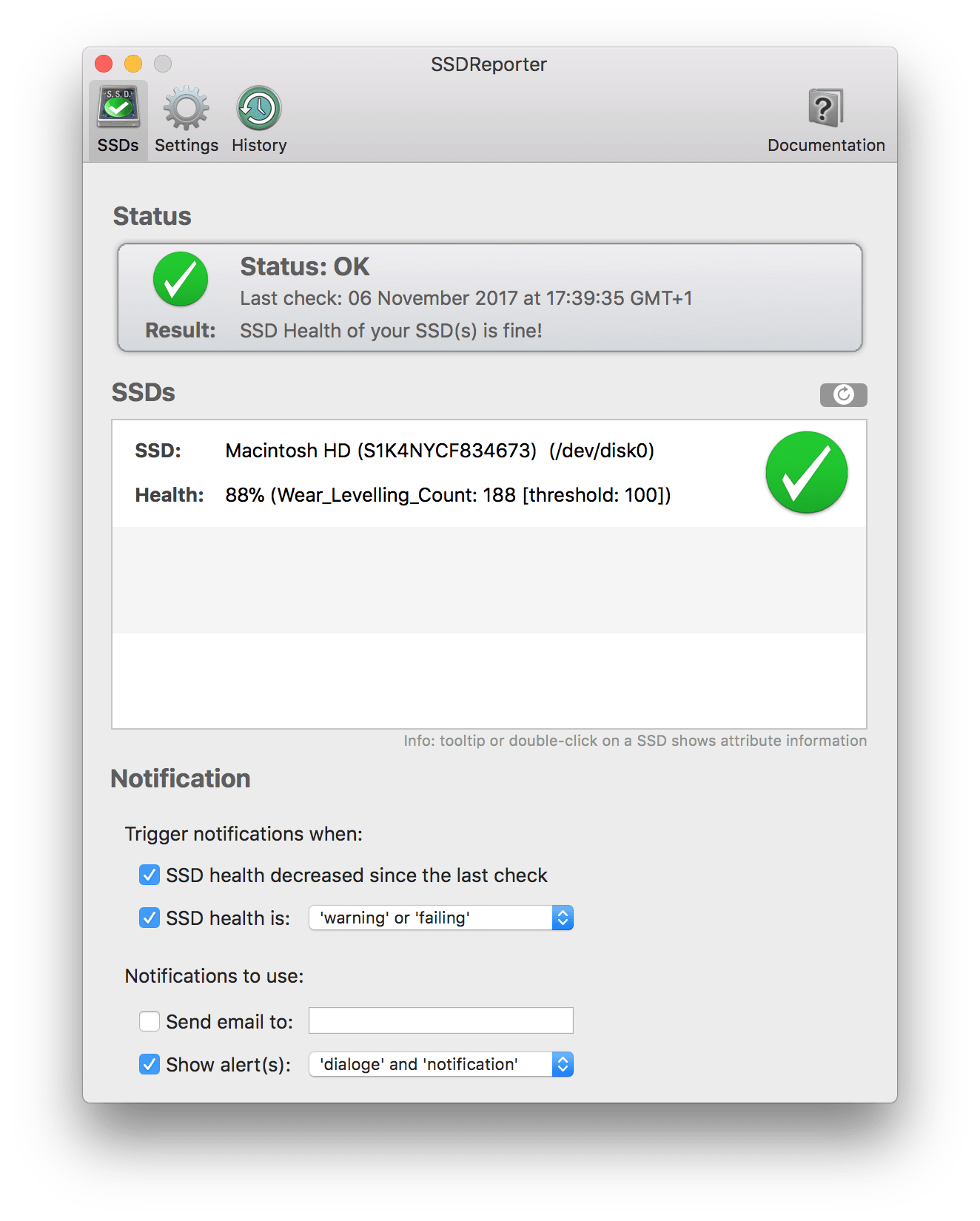

- CHECK SSD HEALTH MACOS HOW TO
- CHECK SSD HEALTH MACOS INSTALL
- CHECK SSD HEALTH MACOS SOFTWARE
- CHECK SSD HEALTH MACOS PASSWORD
Once the recovery session has completed and saved, go back to the main Disk Drill window. Let the recover session run and complete. In Disk Drill's main window, select the volume 'Macintosh HD', or whatever you've called your Mac's hard drive. If you already have Disk Drill installed but didn't check that option when you launched it the first time, go to the Preferences, click the SMART tab and check the box next to 'Monitor my disks for hardware issues.' When it launches, it will ask if you want to 'Monitor my disks for hardware issues'.
CHECK SSD HEALTH MACOS HOW TO
At one point, all the action appears to stop.Here's how to identify bad sector in Disk Drill: A lot of commands now fly by in the Terminal window. Terminal provides no visual feedback of your password, so type carefully, then press Return.
CHECK SSD HEALTH MACOS PASSWORD
Press Return, and you’re asked to enter your admin password to allow sudo (“superuser” do) access, allowing you to run programs that require security access. Copy the command line listed below, and paste it at the Terminal prompt.
CHECK SSD HEALTH MACOS INSTALL
Install HomebrewĪt this point, launch Terminal from the Utilities folder.
CHECK SSD HEALTH MACOS SOFTWARE
Agree to the software license, enter your Mac admin password when requested, and agree to the Terms and Conditions. Once installed, launch Xcode from the Applications folder. Launch the App Store, search for Xcode, then install it on your Mac. The vast majority of Mac users won’t have Xcode, but it’s fast and easy to install. Install Xcodeĭevelopers shouldn’t need to do this, as they’ll already have Xcode installed. You install smartmontools using Homebrew, then use Terminal to run smartmontools. Next, you install a package manager called Homebrew. First, you need to install Apple’s Xcode developer tools. Installing smartmontools is a somewhat lengthy process. Once the tools are installed, you can use them frequently. Also, make sure that you have a lot of time to spare, as this process takes a while to set up the first time. If you’re not comfortable with using Terminal and the command-line interface it provides, I suggest jumping to part 3 of this article.

The second method is to use the Mac Terminal app (found in Applications > Utilities) with a command-line tool called smartmontools. That’s where our next two methods come in handy. While this is helpful news, it doesn’t tell you a lot about potential issues with the SSD. (Self-Monitoring, Analysis and Reporting Technology) status is shown to be “Verified.” The drive is healthy. The “Verified” S.M.A.R.T status indicates the drive is working properly.

In the left sidebar of System Report, scroll down to and click on Storage. On the Overview tab of the About This Mac window, click System Report. To check your Mac’s SSD, click the Apple menu and select About This Mac. For all Mac users, you can check the health of your SSD with within a matter of minutes by navigating to the Disk Utility app on. Failing: The drive has an issue that will result in failure in the near future.Verified: The drive is working within design parameters.While this method is easy to use, it doesn’t provide any details other than one of three words: The first method of checking the health of your Mac SSD is to use the System Information utility. Today we’re looking at three ways to check the health of the SSD in your Mac. That makes them less likely to fail, although all SSDs eventually reach a point where it’s impossible to write to the drive. Unlike hard disk drives (HDDs) that use spinning platters to store data, SSDs have no moving parts. Most new Macs are equipped with fast, quiet, and efficient solid state drives (SSDs) for storage.


 0 kommentar(er)
0 kommentar(er)
